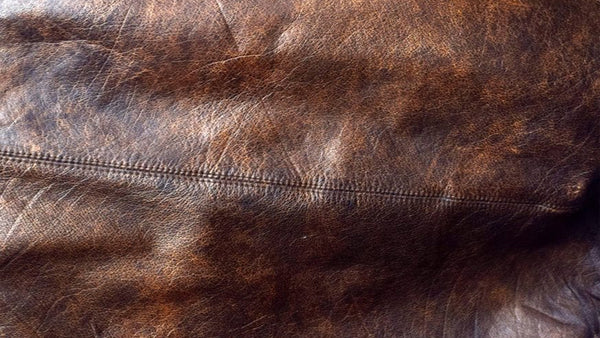Genuine Leather vs Faux Leather
Genuine Leather vs Faux Leather
There are some questions that users wonder about textile products made of both real and artificial leather: What are the most important differences between real leather and fake leather? What are the differences in terms of usage? What are the advantages and disadvantages? In this article, we will answer these questions in detail and help you find answers to the questions in your mind.

What is Genuine Leather?
Genuine leather simply means “real leather.” Leather is a material derived from animal skin, transformed to make it rot-proof, in particular by a tanning process which can be either vegetable or chemical. There are domestic leathers such as lamb or calf, woolly skins and exotic leathers such as crocodiles or python. There are several comments on advantages and disadvantages of genuine leather. In this article, we will take a closer look at the properties of real leather and examine where it differs from artificial leather.

What is Faux Leather?
Faux leather is a synthetic leather, commonly referred to as imitation leather or artificial leather.
Nowadays, there are two main ways to produce faux leather:
· Synthetically: From polyurethane (PU) and PVC (vinyl)
· Naturally: From plants (Vegan leather)
You can find more information about the advantages and disadvantages of faux leather in the coming sections of our article.

How to Tell the Difference Between Genuine and Faux Leather
To distinguish leather and identify faux from real, you can appeal to your senses. Differences between genuine and faux leather can be identified by following the steps below:
· The smell
Real leather has a very characteristic and unique smell, a natural smell. Faux leather, on the other hand, has no smell. To differentiate real leather from faux leather, bringing your nose close to the fabric will help.
· The touch
Real leather is a soft material. If you bend the leather, it will quickly turn to its natural shape. Faux leather is thinner and often cooler to the touch. Following a fold, the mark of the twist will remain apparent.
· The heat
Artificial materials do not retain heat or allow it to pass through, whereas genuine leather heats up almost immediately in the hands, and it also retains body temperature for a few moments after the garment has been removed.
The synthetic leather may heat up slightly on contact with the body, but its surface will be a little damp. Real leather is always dry. While you can spend pleasant hours in genuine leather pants & leggings, think how uncomfortable you would be wearing an imitation leather product.
· The appearance
With the naked eye, it is also possible to recognize real leather from faux leather. Indeed, genuine leather is a fairly smooth material with some natural imperfections (due to the grain of the animal's skin). The faux leather is more textured, and has no imperfections.
· The resistance
Scrape the leather product lightly with your nail. If there is a residue of leather inside your nail, it is a bad sign, it is artificial leather. In addition, genuine leather is difficult to pierce with a needle unlike imitation leather.

Pros and Cons of Genuine Leather
Let's take a look at the pros and cons of genuine leather:
· Genuine leather is more durable. It is a living matter, an organic matter with some imperfections.
· In addition to its durability, leather is comfortable and easy to clean.
· The price of genuine leather is significantly higher than the price of imitation leather. However, considering that it will be worn for many years, you can be sure that leather products will be a good investment.
· The genuine leather has a characteristic smell, and does not cause a bad smell when perfume is applied.
· Real leather is thicker and therefore more resistant to the cold. With a lambskin leather jacket, you can keep your body temperature high even in winter conditions.
· Unlike imitation leather, real leather does not burn.

Pros and Cons of Faux Leather
The pros and cons of faux leather will help to better explain how it differs from real leather:
· Faux leather is a plastic material. If by scratching your leather, you have a residue, then it is not real leather but faux leather.
· Artificial leather burns because it is made from plastic but natural leather does not.
· Synthetic leather is not as breathable as authentic leather. Especially in hot and humid weather, it can be uncomfortable to wear clothes made of imitation leather.
Conclusion: Which is Best for You?
We took a closer look at the differences between real and faux leather. With the comparison of genuine and faux leather, we saw that genuine leather stands out in terms of durability, warmth, aesthetics and hygiene. With the advantage of long-term use, leather products will be with you for years and will give you more than its price.
